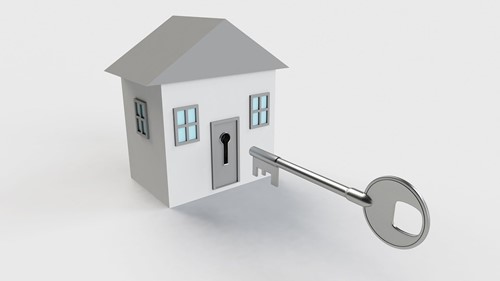
Image by Arek Socha from Pixabay
If you bought a house that was over $484,350 prior to 2020, you had to get a jumbo loan, which is a non-conforming loan. The Federal Housing Finance Agency (FHFA) increased the limit on conforming loans to $510,400 in most areas. The FHFA also increased the loan limit to $765,600 in some high-cost areas, which include Alaska, Guam, Hawaii and the U.S. Virgin Islands. FHFA increased the loan limit for conforming loans because home prices increased by an average of 5.38 percent from the third quarter of 2018 to the third quarter of 2019.
A conforming loan follows standardized rules set by the Federal National Mortgage Association (FNMA / Fannie Mae) and the Federal Home Loan Mortgage Corporation (FHLMC / Freddie Mac). The two companies are government-sponsored, and they drive the home loan market. The most common standardized rule is the loan limit. Still, the two organizations dictate how much a loan-to-value ratio can be, your debt-to-income ratio, higher interest rates based on your credit score and what documentation you might need for a home loan. A conforming loan must also have private mortgage insurance (PMI) if the down payment is less than 20 percent.
Banks do not like to write non-conforming loans because they cannot sell those loans to Fannie Mae and Freddie Mac, or most of the other smaller organizations that buy loans. The most common non-conforming loan is a jumbo loan – a loan that is outside the loan limit, which is increasing for 2020. Other types of non-conforming loans might include loans for people who do not meet the debt-to-income ratio or the loan-to-value ratio. Because those loans are riskier, they often come with higher interest rates. Generally, you must also have a very good credit score to qualify for most non-conforming loans, especially jumbo loans.
While some states and territories were mentioned as high-cost areas above, some places in the continental United States are also considered to be high-cost areas. Washington, D.C. and some parts of California have the higher limit of $765,600 for 2020 because the prices of single-family homes are higher than average.
To qualify for a jumbo loan, you’ll have to jump through more hoops. Some factors a lender look for include:
A credit score of at least 700. Some lenders require a score of at least 720.
Your debt-to-income ratio (DTI). While non-conforming loans may go outside the typical DTI, some lenders might refuse to go over 45 percent.
The lender might require you to have cash reserves of several months to a year in the bank.
The lender might require extensive documentation. You might have to supply your complete tax returns and several months of bank statements for a jumbo loan.
Lenders might require a second appraisal of the home.
A larger down payment.
You might get a higher interest rate, depending on the lender, your financial situation and market conditions.
Closing costs are often higher because of the extra steps you must go through to qualify for the loan.
As with any loan, shop around for a jumbo loan instead of jumping at the first loan offered.

If land or lake living is on your mind, let me be your connection to the heartland. Whether it is a first time home, a vacation retreat, or an investment property, I strive to give my customers one on one service every time. With my background in Business Administration and Education, my customers will receive top-notch personalized service, customized to fit their specific needs.